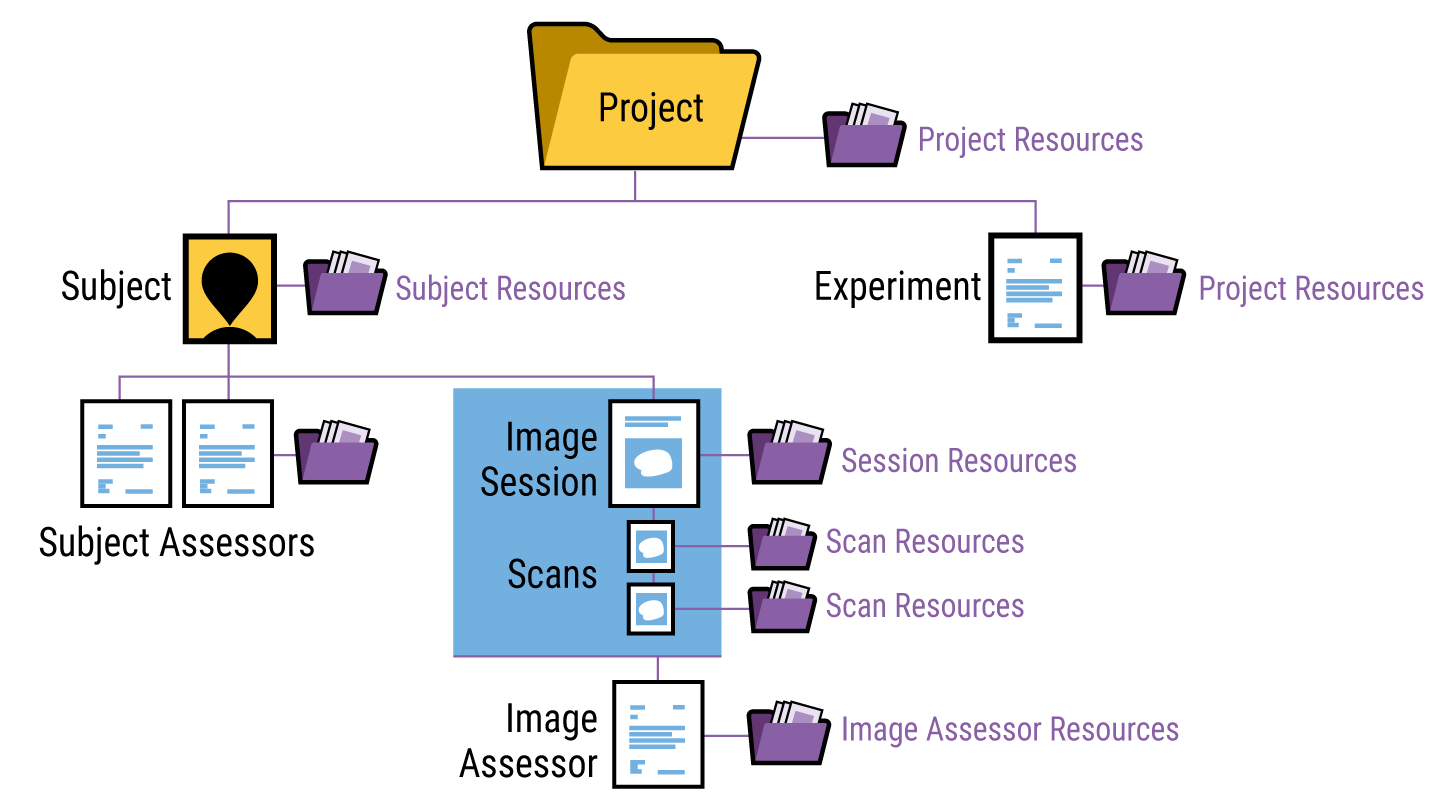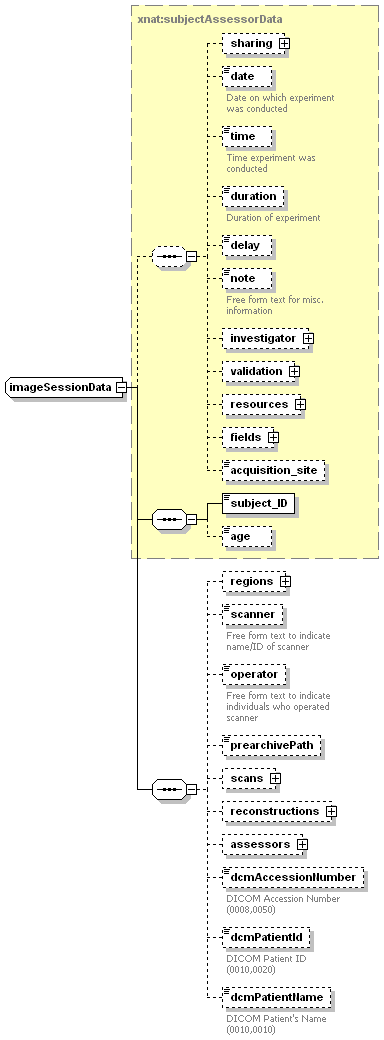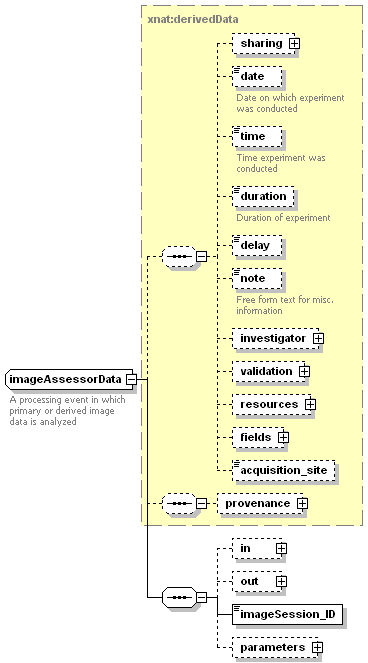Understanding the XNAT Data Model
The core data-model used in XNAT is defined in an XSD document here. This schema is extended by other XSD document on a site by site basis to build customized representations of neuroimaging data. There are three core data-types in the xnat.xsd; Projects, Subjects & Experiments, with a special class of experiments defined for Image Sessions. Most data-types in XNAT can be defined by their relationship to one of those core data-types.

Projects (xnat:projectData)
A project us used to define a collection of data stored in XNAT. These often correlate directly to an IRB approved study, or a multi-site data acquisition program. Within XNAT, the project is used to define a security structure for data. Users are given certain permissions for data within certain projects (usually via a user group like Owner, Member, & Collaborator). Data is then assigned to certain projects. In turn, XNAT can control which data users can access based on the project permissions.
Subjects (xnat:subjectData)
A subject is anyone who participates in a study. XNAT has traditionally focused on human studies. However, in practice, a subject could be a non-human subject as well. A subject cannot exist outside the context of a project. A subject record is 'owned' by the project which created it. Additionally, subjects can be registered (shared) with other projects (to capture longitudinal data from various studies).
Experiments (xnat:experimentData)
An experiment is an event by which data is acquired. This data can be imaging data, or non-imaging data. Similar to subject, an experiment cannot exist outside the context of a project. It is owned by the project which first added it. It can additionally be shared into other projects.
Experiments are usually extended within XNAT to be specific kinds of experiments. Most experiments in XNAT are extended as Subject Assessors. In turn, subject assessors can be Image Sessions. Image Sessions can be MR Sessions, PET Sessions, CT Sessions, etc.
Subject Assessors (xnat:subjectAssessorData)
A subject assessor is a specific kind of experiment which is associated with a subject. It contains a foreign key to the subject. Subject Assessors are a common extension point in XNAT. If a user is trying to model new data, it is usually an extension of subject assessors. Only one extension of subject assessors is provided in the default XNAT install (Image Session). However, many XNAT installations create their own subject assessors to model a variety of subject tests, forms, etc.
Image Sessions (xnat:imageSessionData)
The Image Session is an extension of the Subject Assessor. It is used to capture the data acquired in the normal course of imaging studies. It adds a collection of image scans, reconstructions, and image assessors, to capture the data as scanned, preprocessed, and processed.

MR Session, PET Session, CT Session, etc.
Most image data stored in a standard XNAT fits into one of these extensions of the Image Session data-type. They correlate to the types defined by the DICOM standard.
Image Sessions introduce a collection of sub-elements which are used to capture imaging data.
Scans
Scans are children of any Image Session type. They are used to model individual scan series from a single scanning session. A single Session will usually contain multiple scans of different types. The Imaging Scans are usually extended by modality to be MR scans or PET scans, etc. They also specify the files which make up that scanning series (usually including the RAW data).
Reconstructions
A single Image Session can contain multiple image reconstructions. These are typically the results of a pre-processing stream: Averaged Atlas results, Gain field corrected images, etc.
Image Assessors
A single Image Session can contain multiple image assessors. They are typically the results of a processing stream and can contain both generated images and statistics. To capture image assessors, it is necessary to model the processing results in an XSD. As an example, image assessors can include Freesurfer or FSL results.
